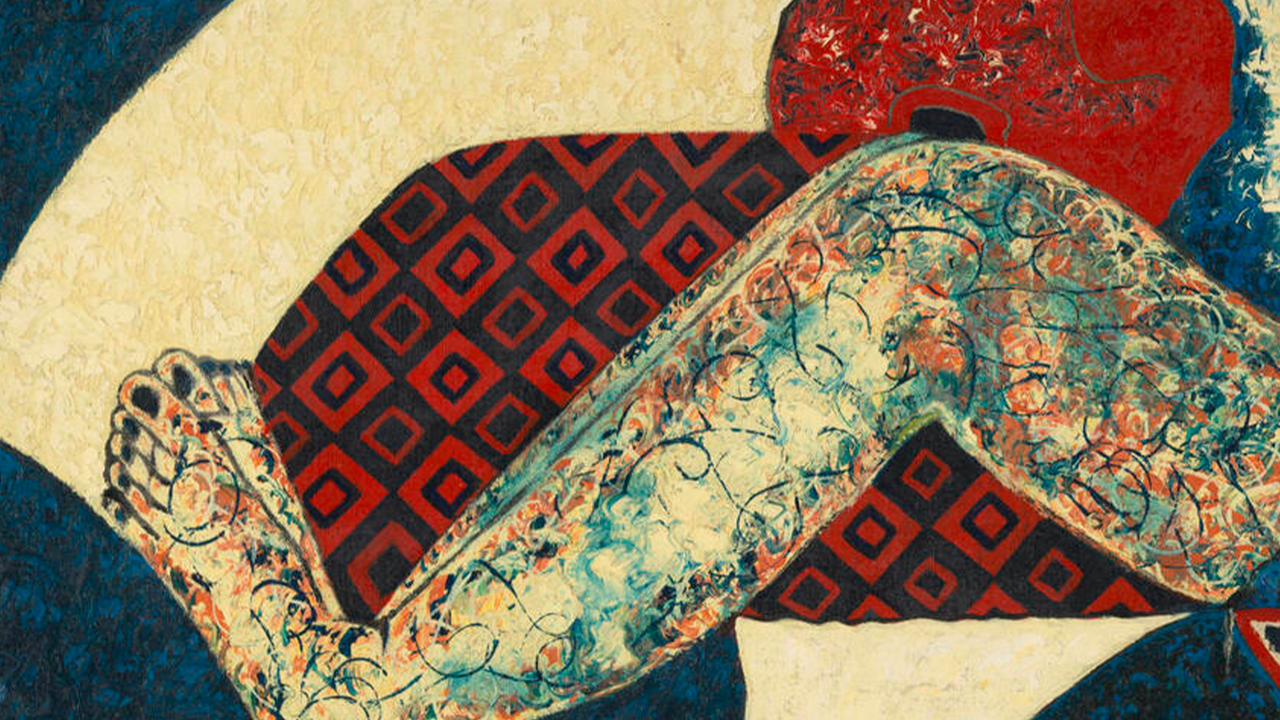Atopolis
Manège de Sury, Mons, Belgium
Manège de Sury, Mons, Belgium

‘Atopolis’ opens with Lawrence Weiner’s We Are Ships at Sea Not Ducks on a Pond (1985/2015), which is painted on the outside of the building – a former Gendarmerie barracks. The text establishes the premise of the show, which is indebted to the Caribbean philosopher, poet and visionary Édouard Glissant. Like ‘Atopolis’ as a whole, Weiner’s work hints at the possibility of a topology for everybody, a utopia of everyplace. The exhibition, organized by WIELS curators Dirk Snauwaert and Charlotte Friling as part of Mons’s year as European Capital of Culture, presents the work of 23 artists addressing questions of migration, displacement and composite cultures. The assembled works don’t offer a collective, comprehensive answer to what a contemporary utopia in a globalized world should look like, but rather present a collection of poetic suggestions. Glissant regarded the idea of an exhibition as an archipelago, wherein lay the possibility of enduring cross-cultural contacts, and the curators apply this line of thought in a literal sense: the majority of the artists, originating from a number of different continents, have had long-standing relationships with WIELS; a few, like Francis Alÿs, Yto Barrada and Walter Swennen, presented their first solo exhibitions in Belgium at the Brussels museum.
Glissant’s concept of ‘mondialité’ – defined as a global dialogue embracing difference, the specificity of place and history – is key to understanding the relationship among the works displayed here. Isolated in individual rooms, the pieces, sometimes obliquely, grapple and play with notions of otherness, fluid identities and multiplicities of language. The importance of difference is embodied in the work of Jef Geys, Vincent Meessen, Swennen and Jack Whitten. Meessen’s Stencil for Words from the Sons of Caïn (2015) weaves together the history of Mons and the early presence of the Roma people in the area, Henri Storck’s documentary photography and the linguistic influence of Romany on French. Transparent stencils placed on top of pages with etymological examples sweep away conceptions of singular origins of language and culture.

Alÿs addresses the process of exclusion from Europe’s borders in a large installation entitled Don’t Cross the Bridge Before You Get to the River (2008). It documents the artist’s proposal for two lines of children located at opposite ends of the Strait of Gibraltar to enter the ocean holding small boats in their hands. Together, the children formed an imaginary bridge between Europe and Africa. The symbolic but deeply political project draws added poignancy from the ongoing humanitarian crisis related to this passage. Despite the grim realities, ‘Atopolis’ is an optimistic show – a cry for renewed attention toward diversity and chaos in an increasingly homogenized, regulated world. Organized chaos reigns in the show’s largest work, a monumental installation by Thomas Hirschhorn (Globalization Reversed, 2015), which attempts to visualize Glissant’s key concepts and acts as a shared repository of knowledge for viewers.
As a proposal for utopia, ‘Atopolis’ does not strive for a unified project, but rather aspires to a collective state of mind that requires a radical openness toward unhampered exchange. It’s a seductive idea, yet the show offers no convincing viewpoint on the consequences of globalization. Obviously, no exhibition should infer an all-encompassing thesis, but it should at least adopt a position. While the individual works here are often compelling and powerful, the curators have fallen into the trap of presenting a grand narrative and applying a one-size-fits-all concept that has already been deployed numerous times in major exhibitions. Take, for instance, ‘Utopia Station’: the Glissant-inspired – although more activist and process-oriented – project curated by Molly Nesbit, Hans-Ulrich Obrist and Rirkrit Tiravanija at the Venice Biennale over a decade ago. Nevertheless, ‘Atopolis’ is important for drawing renewed attention to Mons and to the region of the Borinage, once the central stage of early industrialization and migration on the continent.
























